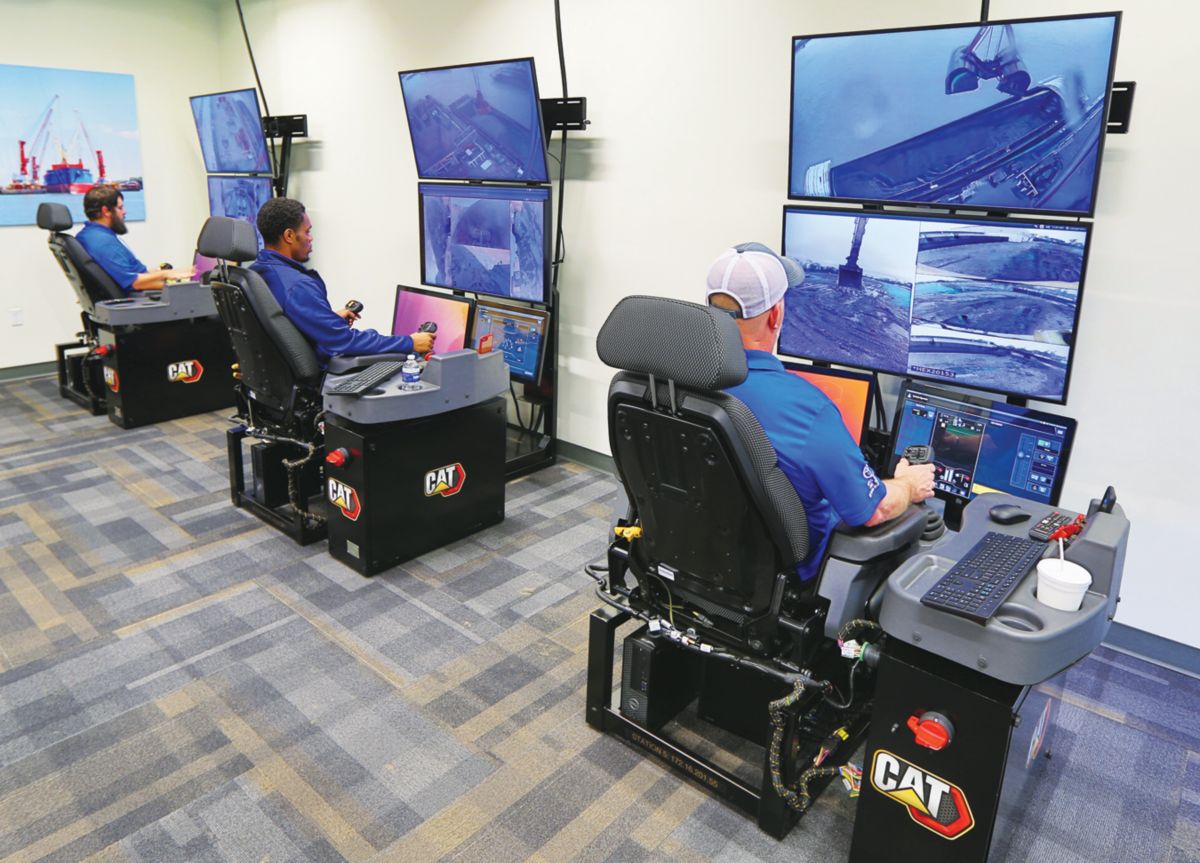To boost job site safety in hazardous dozing conditions, Caterpillar announces the expansion of Command remote machine operation to Cat D5, D6, and D7 Dozers. Command for Dozing removes operators from the cab and offers remote operating from a safe distance in applications such as overburden/reclamation work, ripping overburden or leach pads, slurry pond dozing, and operation around hazardous materials or unstable surfaces.

Next-generation dozers are shipped from the factory remote ready, making field installation fast with only a few additional parts required. With Command fully integrated with the machine’s electronic and hydraulic systems, remote operation delivers quick response, smooth control, and virtually no latency. Companies have the option of equipping dozers with line-of-sight (LOS) or non-line-of-sight (NLOS) operation, and a ground-level switch quickly toggles between manual and remote dozer operation. To help improve job site productivity, Command allows production to restart immediately following disruptive processes, such as blasting in quarry applications.

Beyond improving safe operation and increasing productivity, Command for Dozing offers a potential solution to worker shortages and added training opportunities for newer operators. By allowing the operator to work outside the machine, Command opens opportunities to those with physical limitations which prevent them from climbing into the equipment. It can attract a new generation of workers while increasing the longevity of experienced operators.
Two options, precise control
Portable and lightweight, the Command console (LOS) allow workers to work outside of the cab while remaining on-site and in direct visual contact with the dozer. With its range reaching 437 yd (499 m), the console positions the user for optimum visibility. Requiring no on-site communications infrastructure, it is ideal for short-term and emergency remote operations. An ergonomic console layout features intuitive controls with ISO symbols that provide access to all dozer functions, while an LED display offers a clear readout of machine status.

Furthering operation simplicity, the console (LOS) system supports multiple assist technologies the operator would have from inside the cab, including traction control, AutoCarry, and a stable blade. Unlocking with an electronic access card, the console can be configured to control another machine equipped with Command by simply changing out an RFID chip. Its lithium-ion battery provides a quick charge and long run times in varying ambient temperatures. Built-in safety features stop all dozer movements if the remote shutdown switch is pressed, wireless communication is lost, or the console is tilted more than 45 degrees.
The Command station provides non-line-of-site operation from the comfort of an air-conditioned office on-site or many miles away, as the distance is limited only by the capabilities of the wireless network. By eliminating the fatigue-inducing vibration of machine movements in the cab, operators can work with less fatigue. The configurable station features a similar feel to the cab with familiar controls, complete with pedals, joysticks, adjustable seats, switches, and storage. Multiple screen displays offer visuals from the left and right cutting edges, blade top-center, and rearview that include the ripper.
Beyond supporting assist technologies offered by the console (LOS), the Command station (NLOS) offers compatibility with blade load monitor, slope assist and Grade with 3D with the same response time as in the cab. Users can easily switch to operating a different Command-equipped machine – dozer, wheel loader, or excavator – from the same or different sites with virtually no downtime for shift changes or for travel to the job site.
 Copyright 2020 All rights reserved.
Copyright 2020 All rights reserved.